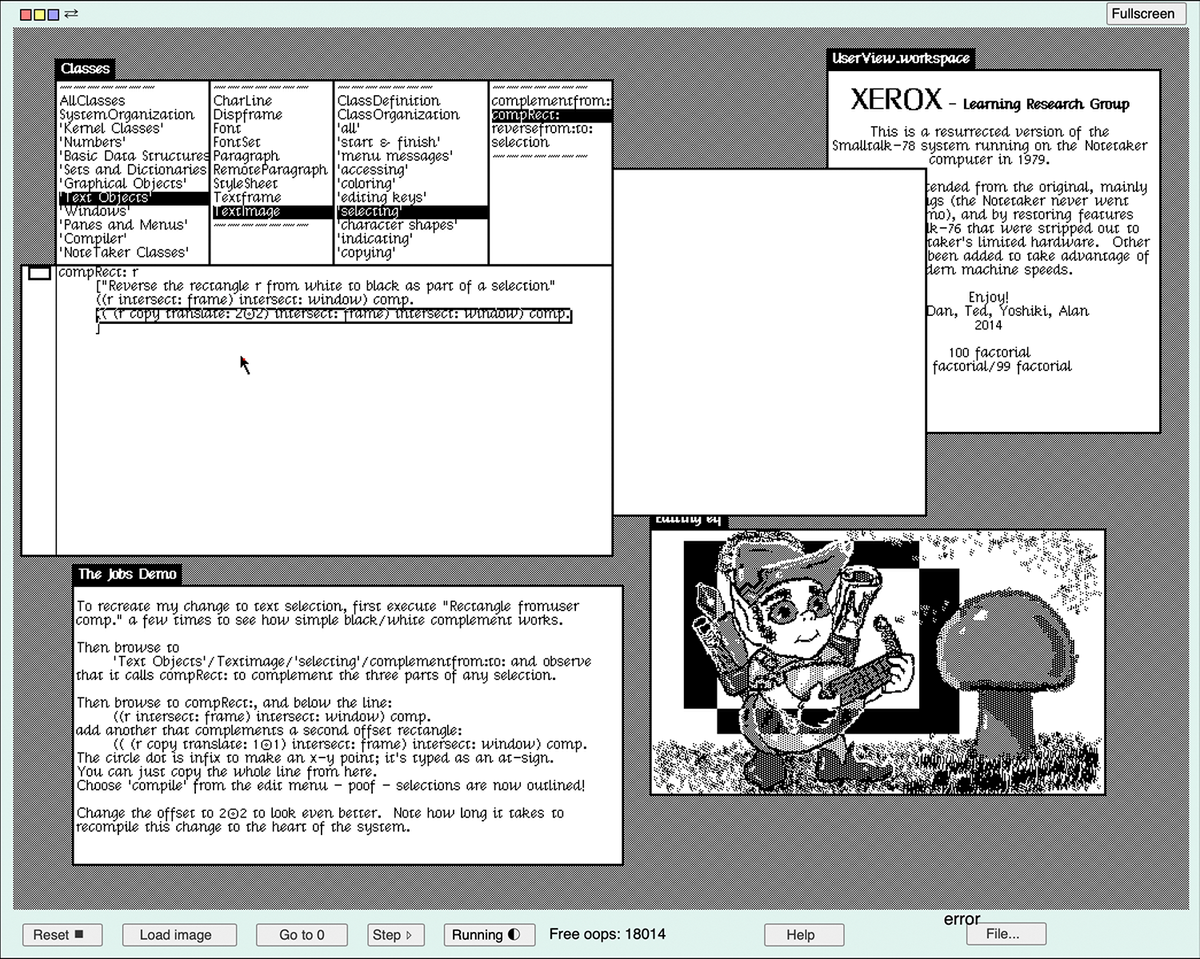Late in 1979, Steve Jobs and other colleagues from Apple visited the Xerox Palo Alto Research Center (PARC). There they were introduced to the experimental Alto computer and the Smalltalk language and computing environment, developed by Alan Kay’s Learning Research Group. Smalltalk was a breakthrough in object-oriented programming, an approach that’s used in many of the most popular programming languages today. During his visit, Jobs was taken with Smalltalk’s graphical user interface, and it reshaped his subsequent approach at Apple. This screen capture from the version of Smalltalk demoed for Jobs shows a critical moment that impressed him. Dan Ingalls, one of the developers of Smalltalk, was able to change the user interface live, switching the appearance of selected text from white text on a black background to a bounding rectangular box (as in the upper left window). More recently, Ingalls created the Smalltalk Zoo, a collection of Smalltalk emulators that you can run in your browser to experience for yourself Jobs’s aha moment. For more on the history of Smalltalk and the Alto, see “50 Years Later, We’re Still Living in the Xerox Alto’s World.”
Part of a continuing series looking at historical artifacts that embrace the boundless potential of technology.
- How the Graphical User Interface Was Invented ›
- Xerox Parc’s Engineers on How They Invented the Future ›
- Q&A: Adele Goldberg on the Legacy of Smalltalk ›
David C. Brock is a historian of technology, director of curatorial affairs at the Computer History Museum, and director of CHM’s Software History Center. He focuses on histories of computing and semiconductors as well as on oral history and is occasionally lucky enough to use the restored Alto in the museum’s Shustek Research Archives. He is the coauthor of Moore’s Law: The Life of Gordon Moore, Silicon Valley’s Quiet Revolutionary (Basic Books, 2015) and Makers of the Microchip (The MIT Press, 2022). He is on Bluesky @dcbrock.bsky.social.



